KhoĂŻak
« L’étiologie de la fabrication des statuettes osiriennes au mois de Khoiak et le Rituel de l’ouverture de la bouche d’après le papyrus Jumilhac »
ENiM 5, 2012, p. 215-255.
 La légende de la découverte de la tête tranchée d’Osiris à Nedjit par Anubis et de l’ouverture de sa bouche afin de lui faire divulguer les endroits où il faut chercher les membres dispersés du dieu est racontée dans le papyrus Jumilhac en cinq versions plus ou moins circonstanciées. Une nouvelle compréhension de ces passages permet d’y reconnaître l’étiologie de la fabrication de statuettes osiriennes en argile lors des festivités du mois de Khoiak et éclaire les pratiques locales de Hardaï, non mentionnées dans le long texte du « Rituel de Khoiak » à Dendara.
La légende de la découverte de la tête tranchée d’Osiris à Nedjit par Anubis et de l’ouverture de sa bouche afin de lui faire divulguer les endroits où il faut chercher les membres dispersés du dieu est racontée dans le papyrus Jumilhac en cinq versions plus ou moins circonstanciées. Une nouvelle compréhension de ces passages permet d’y reconnaître l’étiologie de la fabrication de statuettes osiriennes en argile lors des festivités du mois de Khoiak et éclaire les pratiques locales de Hardaï, non mentionnées dans le long texte du « Rituel de Khoiak » à Dendara.
 Papyrus Jumilhac contains five more or less extensive versions of a myth according to which Anubis discovered the severed head of Osiris at Nedjit; the subsequent performance of an opening of the mouth enabled the head to reveal the places where the missing body parts are to be found. A corrected reading of essential phrases allows us to recognize the myth as an aetiology explaining the fabrication of Osirian clay figures during the festival of Khoiak. Furthermore, this new understanding sheds light on the local practices at Hardai which are not described in the famous Khoiak text at Dendera.
Papyrus Jumilhac contains five more or less extensive versions of a myth according to which Anubis discovered the severed head of Osiris at Nedjit; the subsequent performance of an opening of the mouth enabled the head to reveal the places where the missing body parts are to be found. A corrected reading of essential phrases allows us to recognize the myth as an aetiology explaining the fabrication of Osirian clay figures during the festival of Khoiak. Furthermore, this new understanding sheds light on the local practices at Hardai which are not described in the famous Khoiak text at Dendera.
 Consulter cet article (40096) -
Consulter cet article (40096) -  Télécharger cet article au format pdf (20491)
Télécharger cet article au format pdf (20491)
« Le papyrus magico-funĂ©raire Louvre E 5353 »
ENiM 6, 2013, p. 257-289.
 Publication du pLouvre E 5353, d’époque romaine et de provenance inconnue, rĂ©digĂ© au profit d’une certaine Ḥr-ʿnḫ. Le papyrus dont le dĂ©but manque est aujourd’hui constituĂ© de quatre pages dont la dernière est restĂ©e vierge de toute inscription ou dessin. On lit sur les deux premières un assez long texte rĂ©digĂ© en hiĂ©ratique, prĂ©cĂ©dĂ© de quelques vignettes empruntĂ©es au Livre des Morts. Introduit par le titre du ch. 125 et quelques sĂ©quences originales dont un emprunt au « grand dĂ©cret Ă©mis pour la province-igeret », ce texte, oĂą interviennent plusieurs officiants, expose un rituel d’exĂ©cration contre Apophis qui se poursuit avec des extraits du ch. 163 du Livre des Morts et de la scène 72 B du rituel de l’ouverture de la bouche. Divers indices rĂ©partis dans l’ensemble du papyrus invitent Ă penser que les opĂ©rations magiques ici dĂ©crites, bien qu’inattendues dans ce contexte funĂ©raire, Ă©taient rĂ©alisĂ©es dans les derniers jours de Khoiak et concouraient comme le reste du texte Ă la renaissance de la dĂ©funte Ă l’instar d’Osiris.
Publication du pLouvre E 5353, d’époque romaine et de provenance inconnue, rĂ©digĂ© au profit d’une certaine Ḥr-ʿnḫ. Le papyrus dont le dĂ©but manque est aujourd’hui constituĂ© de quatre pages dont la dernière est restĂ©e vierge de toute inscription ou dessin. On lit sur les deux premières un assez long texte rĂ©digĂ© en hiĂ©ratique, prĂ©cĂ©dĂ© de quelques vignettes empruntĂ©es au Livre des Morts. Introduit par le titre du ch. 125 et quelques sĂ©quences originales dont un emprunt au « grand dĂ©cret Ă©mis pour la province-igeret », ce texte, oĂą interviennent plusieurs officiants, expose un rituel d’exĂ©cration contre Apophis qui se poursuit avec des extraits du ch. 163 du Livre des Morts et de la scène 72 B du rituel de l’ouverture de la bouche. Divers indices rĂ©partis dans l’ensemble du papyrus invitent Ă penser que les opĂ©rations magiques ici dĂ©crites, bien qu’inattendues dans ce contexte funĂ©raire, Ă©taient rĂ©alisĂ©es dans les derniers jours de Khoiak et concouraient comme le reste du texte Ă la renaissance de la dĂ©funte Ă l’instar d’Osiris.
 Publication of pLouvre E 5353, of Roman Period and of unknown provenance, written for the benefit of a woman named Ḥr-ʿnḫ. The text, whose beginning is missing, nowadays consists of four pages, the last one left free from any inscription or drawing. On the two first pages, one can read a text, rather long and written in hieratic, preceded by a few illustrations from the Book of the Dead. Introduced by the ch. 125 and some original sequences, among which a short borrowing from the “great decree issued for the nome of igeret”, this text, in which several officiants play a part, includes an execration ritual against Apophis, and goes on with excerpts of ch. 163 of the Book of the Dead, and of (the) scene 72b of the Ritual of opening the mouth. Several clues here and there in the papyrus suggest that the magical rites here described, though unexpected in such a funerary context, were performed during the last days of Khoiak, and contributed, together with the rest of the text, to the deceased’s rebirth like Osiris.
Publication of pLouvre E 5353, of Roman Period and of unknown provenance, written for the benefit of a woman named Ḥr-ʿnḫ. The text, whose beginning is missing, nowadays consists of four pages, the last one left free from any inscription or drawing. On the two first pages, one can read a text, rather long and written in hieratic, preceded by a few illustrations from the Book of the Dead. Introduced by the ch. 125 and some original sequences, among which a short borrowing from the “great decree issued for the nome of igeret”, this text, in which several officiants play a part, includes an execration ritual against Apophis, and goes on with excerpts of ch. 163 of the Book of the Dead, and of (the) scene 72b of the Ritual of opening the mouth. Several clues here and there in the papyrus suggest that the magical rites here described, though unexpected in such a funerary context, were performed during the last days of Khoiak, and contributed, together with the rest of the text, to the deceased’s rebirth like Osiris.
 Consulter cet article (40797) -
Consulter cet article (40797) -  Télécharger cet article au format pdf (21508)
Télécharger cet article au format pdf (21508)
« The Dendera zodiacs as narratives of the myth of Osiris, Isis, and the child Horus »
ENiM 8, 2015, p. 133-185.
 À part les signes clairement identifiables de la bande zodiacale, des quatre constellations conventionnelles égyptiennes et des planètes, les autres dessins des deux zodiaques de Dendera semblent dériver des systèmes de représentation traditionnels égyptiens. Ces représentations avec les figures des décans enregistrent des phénomènes célestes et des événements de culte référant qui racontent l’histoire de la mort et la résurrection d’Osiris, la fécondation d’Isis par son mari décédé et la naissance de leur enfant Horus. Ici les aspects astraux des mythes s’attachent aux phases de la lune, au cycle annuel du soleil et au lever héliaque de Sirius. Ainsi, les zodiaques, ne sont-ils pas des catalogues de constellations, mais des cartes du ciel conçus à un moment donné qui correspond à la coïncidence de la pleine lune et de l’équinoxe d’automne en 52 av. J.-C. et en 36 apr. J.-C.
À part les signes clairement identifiables de la bande zodiacale, des quatre constellations conventionnelles égyptiennes et des planètes, les autres dessins des deux zodiaques de Dendera semblent dériver des systèmes de représentation traditionnels égyptiens. Ces représentations avec les figures des décans enregistrent des phénomènes célestes et des événements de culte référant qui racontent l’histoire de la mort et la résurrection d’Osiris, la fécondation d’Isis par son mari décédé et la naissance de leur enfant Horus. Ici les aspects astraux des mythes s’attachent aux phases de la lune, au cycle annuel du soleil et au lever héliaque de Sirius. Ainsi, les zodiaques, ne sont-ils pas des catalogues de constellations, mais des cartes du ciel conçus à un moment donné qui correspond à la coïncidence de la pleine lune et de l’équinoxe d’automne en 52 av. J.-C. et en 36 apr. J.-C.
 Besides the unambiguously identifiable depictions of the zodiacal belt, four conventional Egyptian asterisms, and the planets, the other signs that feature in the two Dendera zodiacs are shown to derive from traditional Egyptian representational systems. These images, together with the accompanying figures of the decans, are incorporated into the design of the monuments to record celestial events and related cultic acts that tell the story of Osiris’s death and resurrection, the conception of Isis from her deceased husband, and the nativity of their child, Horus. The astral aspects of these myths are connected with the phases of the moon, the yearly solar cycle, and the annual dawn rising of the star Sirius. The zodiacs are thus not catalogues of constellations but peculiar sky charts devised at specific moments of time that correspond to the coincidence of the full moon with the autumnal equinox in the years 52 BCE and 36 CE.
Besides the unambiguously identifiable depictions of the zodiacal belt, four conventional Egyptian asterisms, and the planets, the other signs that feature in the two Dendera zodiacs are shown to derive from traditional Egyptian representational systems. These images, together with the accompanying figures of the decans, are incorporated into the design of the monuments to record celestial events and related cultic acts that tell the story of Osiris’s death and resurrection, the conception of Isis from her deceased husband, and the nativity of their child, Horus. The astral aspects of these myths are connected with the phases of the moon, the yearly solar cycle, and the annual dawn rising of the star Sirius. The zodiacs are thus not catalogues of constellations but peculiar sky charts devised at specific moments of time that correspond to the coincidence of the full moon with the autumnal equinox in the years 52 BCE and 36 CE.
 Consulter cet article (58713) -
Consulter cet article (58713) -  Télécharger cet article au format pdf (22185)
Télécharger cet article au format pdf (22185)
« Une introduction Ă la « formule pour prĂ©senter les offrandes » (en marge d’une publication prochaine, 1) »
ENiM 12, 2019, p. 181-200.
 Essai de synthèse sur une formule religieuse dont les premières attestations remontent au tout début du Nouvel Empire, réalisé ici sur la base d’une version démotique conservée sur le P. Bodl. MS. Egypt. a.3(P). Le texte est dépourvu de titre, mais il s’agit, comme l’indiquent plusieurs parallèles, d’un des derniers témoins connus d’une « formule pour déposer les offrandes » (rA n wAH xwt). Son analyse linéaire, mais aussi l’examen des différents contextes où elle apparaît au cours de son histoire, permet d’en situer la lecture dans le calendrier religieux. La présence de cette formule dans le manuscrit d’Oxford à côté d’une version originale du Rituel de faire sortir Sokar de la STyt dont la lecture tombe le 25 Khoiak (date explicitement mentionnée en II, 1), ainsi que nombre d’éléments internes, confirment si besoin était son appartenance au corpus des rites osiriens de ce mois.
Essai de synthèse sur une formule religieuse dont les premières attestations remontent au tout début du Nouvel Empire, réalisé ici sur la base d’une version démotique conservée sur le P. Bodl. MS. Egypt. a.3(P). Le texte est dépourvu de titre, mais il s’agit, comme l’indiquent plusieurs parallèles, d’un des derniers témoins connus d’une « formule pour déposer les offrandes » (rA n wAH xwt). Son analyse linéaire, mais aussi l’examen des différents contextes où elle apparaît au cours de son histoire, permet d’en situer la lecture dans le calendrier religieux. La présence de cette formule dans le manuscrit d’Oxford à côté d’une version originale du Rituel de faire sortir Sokar de la STyt dont la lecture tombe le 25 Khoiak (date explicitement mentionnée en II, 1), ainsi que nombre d’éléments internes, confirment si besoin était son appartenance au corpus des rites osiriens de ce mois.
 A summary report about a religious formula whose first attestations date back to the very beginning of the New Kingdom. The starting point for this study is a demotic version written on P. Bodl. MS. Egypt. a.3(P). The text is preceded by no title but it is, as shown by several parallels, one of the last known attestations of a “formula for presenting offerings” (rA n wAH xwt). Its linear analysis, but also examination of the different contexts in which it appears throughout its history, make it possible to situate the reading in the religious calendar. The presence of this formula in the Oxford manuscript next to an original version of the Ritual of bringing Sokar out of the STyt, read on 25 Khoiak (this date is explicitely specified in II, 1), as well as many internal elements, confirm if need be its place in the corpus of the rites performed that month.
A summary report about a religious formula whose first attestations date back to the very beginning of the New Kingdom. The starting point for this study is a demotic version written on P. Bodl. MS. Egypt. a.3(P). The text is preceded by no title but it is, as shown by several parallels, one of the last known attestations of a “formula for presenting offerings” (rA n wAH xwt). Its linear analysis, but also examination of the different contexts in which it appears throughout its history, make it possible to situate the reading in the religious calendar. The presence of this formula in the Oxford manuscript next to an original version of the Ritual of bringing Sokar out of the STyt, read on 25 Khoiak (this date is explicitely specified in II, 1), as well as many internal elements, confirm if need be its place in the corpus of the rites performed that month.
 Consulter cet article (36179) -
Consulter cet article (36179) -  Télécharger cet article au format pdf (17302)
Télécharger cet article au format pdf (17302)
« Determining the Dates of the Illumination of the Great Temple at Abu Simbel and their Relation to Khoiak »
ENiM 14, 2021, p. 261-272.
 Le Grand Temple d’Abou Simbel a été construit au XIIIe siècle avant J.C. par Ramsès II. Deux fois par an, le soleil illumine l’intérieur de ce temple, éclairant le couloir de 60 m de long et illuminant un ensemble de statues creusées dans la paroi rocheuse tout au fond du temple. Déterminer les dates exactes d’illumination est difficile car l’accès à Abou Simbel est difficile, le temple a été déplacé et les témoignages avant le déplacement sont rares. Cependant, Jan van der Haagen les a enregistrées en 1959 et de son diagramme, la plage calendérique concernée peut être rétablie. Cet article présente l’hypothèse que les dates d’illumination ont été conçues pour coïncider avec la fête de khoïak à sa place correcte dans l’année naturelle. Nombreux sont ceux qui ont soutenu que le calendrier civil régissait le calendrier des fêtes. Cependant, ce calendrier s’éloignait des vraies saisons au rythme d’un jour tous les quatre ans. J’espère démontrer qu’il était impossible, pour le positionnement de khoïak dans l’année, de ne pas tenir compte de la relation des saisons naturelles avec le calendrier, sinon la famine aurait résulté, et que les illuminations au Grand Temple correspondent à la fête de khoïak dans l’année solaire, lorsqu’on ne peut plus se fier au calendrier pour le faire.
Le Grand Temple d’Abou Simbel a été construit au XIIIe siècle avant J.C. par Ramsès II. Deux fois par an, le soleil illumine l’intérieur de ce temple, éclairant le couloir de 60 m de long et illuminant un ensemble de statues creusées dans la paroi rocheuse tout au fond du temple. Déterminer les dates exactes d’illumination est difficile car l’accès à Abou Simbel est difficile, le temple a été déplacé et les témoignages avant le déplacement sont rares. Cependant, Jan van der Haagen les a enregistrées en 1959 et de son diagramme, la plage calendérique concernée peut être rétablie. Cet article présente l’hypothèse que les dates d’illumination ont été conçues pour coïncider avec la fête de khoïak à sa place correcte dans l’année naturelle. Nombreux sont ceux qui ont soutenu que le calendrier civil régissait le calendrier des fêtes. Cependant, ce calendrier s’éloignait des vraies saisons au rythme d’un jour tous les quatre ans. J’espère démontrer qu’il était impossible, pour le positionnement de khoïak dans l’année, de ne pas tenir compte de la relation des saisons naturelles avec le calendrier, sinon la famine aurait résulté, et que les illuminations au Grand Temple correspondent à la fête de khoïak dans l’année solaire, lorsqu’on ne peut plus se fier au calendrier pour le faire.
 The Great Temple at Abu Simbel was built in the 13th century B.C. by Ramses II. Twice a year, the sun illuminates the interior of this temple, shining down the 60 m long corridor and illuminating a set of statues carved into the rock wall at the very back of the temple. Determining the exact dates of illumination is difficult because access to Abu Simbel is restricted, the temple has been relocated, and eyewitness accounts prior to the move are rare, however, Jan van der Haagen took detailed recordings in 1959 and from his diagram, the complete range of dates can be re-established. This article presents the hypothesis that the dates of illumination were designed to coincide with the khoiak festival in its correct place in the natural year. Many have argued that the civil calendar governed the timing of festivals, however, this calendar wandered from the true seasons at the rate of one day every four years. I hope to demonstrate that it was impossible for khoiak’s placement in the year to wander from the natural seasons with the calendar or else famine would have resulted, and that the illuminations at the Great Temple preserved khoiak in its correct placement in the solar year when the calendar could not be relied upon to do so.
The Great Temple at Abu Simbel was built in the 13th century B.C. by Ramses II. Twice a year, the sun illuminates the interior of this temple, shining down the 60 m long corridor and illuminating a set of statues carved into the rock wall at the very back of the temple. Determining the exact dates of illumination is difficult because access to Abu Simbel is restricted, the temple has been relocated, and eyewitness accounts prior to the move are rare, however, Jan van der Haagen took detailed recordings in 1959 and from his diagram, the complete range of dates can be re-established. This article presents the hypothesis that the dates of illumination were designed to coincide with the khoiak festival in its correct place in the natural year. Many have argued that the civil calendar governed the timing of festivals, however, this calendar wandered from the true seasons at the rate of one day every four years. I hope to demonstrate that it was impossible for khoiak’s placement in the year to wander from the natural seasons with the calendar or else famine would have resulted, and that the illuminations at the Great Temple preserved khoiak in its correct placement in the solar year when the calendar could not be relied upon to do so.
 Consulter cet article (31814) -
Consulter cet article (31814) -  Télécharger cet article au format pdf (15474)
Télécharger cet article au format pdf (15474)
« Sealing the Dead »
ENiM 15, 2022, p. 75-92.
 Il s’agit d’un essai sur une découverte centenaire presque oubliée et apparemment insignifiante d’une momie enveloppée dans un filet de pêche auxquelles étaient attachées trois pastilles de boue, dont deux portent encore les empreintes de scellement de deux sceaux différents. Ce filet de pêche et ses scellements donnent lieu à des analyses sur les enveloppes dans lesquelles les momies égyptiennes antiques étaient enfermées et la pratique de sceller les momies, deux sujets considérés dans le contexte de la nature polyvalente de la culture matérielle égyptienne antique en conjonction avec leur correspondance avec des représentations similaires. dans d’autres mé-dias. La survie de cette pratique au Ve siècle après J.-C. est une autre démonstration de la lon-gévité et de la persistance des anciennes traditions funéraires égyptiennes.
Il s’agit d’un essai sur une découverte centenaire presque oubliée et apparemment insignifiante d’une momie enveloppée dans un filet de pêche auxquelles étaient attachées trois pastilles de boue, dont deux portent encore les empreintes de scellement de deux sceaux différents. Ce filet de pêche et ses scellements donnent lieu à des analyses sur les enveloppes dans lesquelles les momies égyptiennes antiques étaient enfermées et la pratique de sceller les momies, deux sujets considérés dans le contexte de la nature polyvalente de la culture matérielle égyptienne antique en conjonction avec leur correspondance avec des représentations similaires. dans d’autres mé-dias. La survie de cette pratique au Ve siècle après J.-C. est une autre démonstration de la lon-gévité et de la persistance des anciennes traditions funéraires égyptiennes.
 This is an essay about an all but forgotten, seemingly insignificant century-old find of a mummy wrapped in a fishnet to which were attached three mud pastilles, two of which still bear the seal-ing impressions of two different signets. That fishnet and its sealings initiate discussions about the envelopes in which ancient Egyptian mummies were enclosed and the practice of sealing mummies, both topics of which are considered within the context of the polyvalent nature of ancient Egyptian material culture in conjunction with their correspondences with similar repre-sentations in other media. The survival of this practice into the 5th century A.D. is yet another demonstration of the conservative longevity and persistence of ancient Egyptian funerary tradi-tions.
This is an essay about an all but forgotten, seemingly insignificant century-old find of a mummy wrapped in a fishnet to which were attached three mud pastilles, two of which still bear the seal-ing impressions of two different signets. That fishnet and its sealings initiate discussions about the envelopes in which ancient Egyptian mummies were enclosed and the practice of sealing mummies, both topics of which are considered within the context of the polyvalent nature of ancient Egyptian material culture in conjunction with their correspondences with similar repre-sentations in other media. The survival of this practice into the 5th century A.D. is yet another demonstration of the conservative longevity and persistence of ancient Egyptian funerary tradi-tions.
 Consulter cet article (33211) -
Consulter cet article (33211) -  Télécharger cet article au format pdf (13651)
Télécharger cet article au format pdf (13651)
« Les temples thĂ©bains durant le règne de Vespasien. Apport prĂ©liminaire du site d’Ermant »
ENiM 15, 2022, p. 93-115.
 Publication de blocs épars mis au jour sur le site d’Ermant, remployés dans un mur romano-byzantin. Ils sont au nom de l’Empereur Vespasien et livrent quelques informations sur la décoration d’un angle de monument (scène de sortie du palais, offrande de la campagne, mention de la visite de Montou-Rê à Djémê le 26e jour de Khoïak).
Publication de blocs épars mis au jour sur le site d’Ermant, remployés dans un mur romano-byzantin. Ils sont au nom de l’Empereur Vespasien et livrent quelques informations sur la décoration d’un angle de monument (scène de sortie du palais, offrande de la campagne, mention de la visite de Montou-Rê à Djémê le 26e jour de Khoïak).
 Publication of a set of loose blocks uncovered in Armant, reused in a Byzantine wall. They bear the name of the Emperor Vespasianus, and provide some information regarding scenes which previously decorated a building corner (scenes of leaving the palace and field-offering, text related to the visit of Montu-Re to Djeme on the 26th of Khoiak).
Publication of a set of loose blocks uncovered in Armant, reused in a Byzantine wall. They bear the name of the Emperor Vespasianus, and provide some information regarding scenes which previously decorated a building corner (scenes of leaving the palace and field-offering, text related to the visit of Montu-Re to Djeme on the 26th of Khoiak).
 Consulter cet article (28629) -
Consulter cet article (28629) -  Télécharger cet article au format pdf (9945)
Télécharger cet article au format pdf (9945)
ENiM 18 - 2025
4 article(s) - 11 mars 2025.
ENiM 1 à 18 (2008-2025) : 223 articles
4 019 738 téléchargements
8 333 271 consulations.
Index des auteurs

Mots clés

Derniers articles : 
Robert Steven Bianchi
Duplication and Continuity
(ENiM 18, p. 13-36 — 11 mars 2025) 
Frédéric Mougenot
Rénénoutet à la porte de la maison
(ENiM 18, p. 1-12 — 29 janvier 2025) 
CENiM - Mise en ligne des volumes Ă©puisĂ©s : 
 Anne-Sophie von BOMHARD DĂ©cans Ă©gyptiens, CENiM 23, Montpellier, 2020 — (2020)
Anne-Sophie von BOMHARD DĂ©cans Ă©gyptiens, CENiM 23, Montpellier, 2020 — (2020) 
 Jean-Claude Grenier L'Osiris ANTINOOS, CENiM 1, Montpellier, 2008 — (26 dĂ©cembre 2008)
Jean-Claude Grenier L'Osiris ANTINOOS, CENiM 1, Montpellier, 2008 — (26 dĂ©cembre 2008) 
TDENiM - Mise en ligne des volumes Ă©puisĂ©s : 
 Twitter
Twitter 3615363 visites - 6511 visite(s) aujourd’hui - 214 connecté(s)
© ENiM - Une revue d’égyptologie sur internet
Équipe Égypte Nilotique et Méditerranéenne - UMR 5140 - « Archéologie des Sociétés Méditerranéennes » (Cnrs) - Université Paul Valéry - Montpellier III

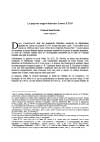
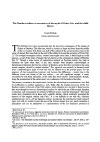
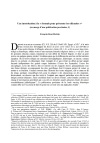
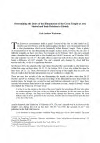
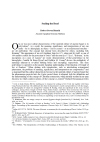
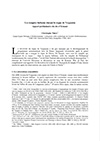





















 Contact
Contact
 Abonnez-vous !
Abonnez-vous ! Équipe Égypte Nilotique et Méditerranéenne
Équipe Égypte Nilotique et Méditerranéenne UMR 5140 « Archéologie des Sociétés Méditerranéennes » (Cnrs)
UMR 5140 « Archéologie des Sociétés Méditerranéennes » (Cnrs) Université Paul Valéry - Montpellier III
Université Paul Valéry - Montpellier III